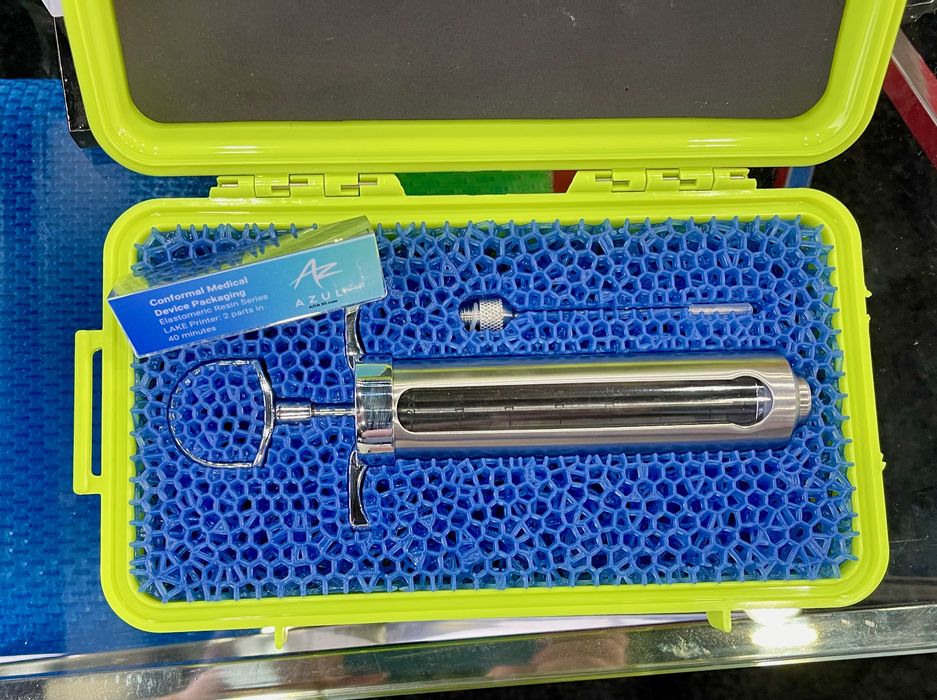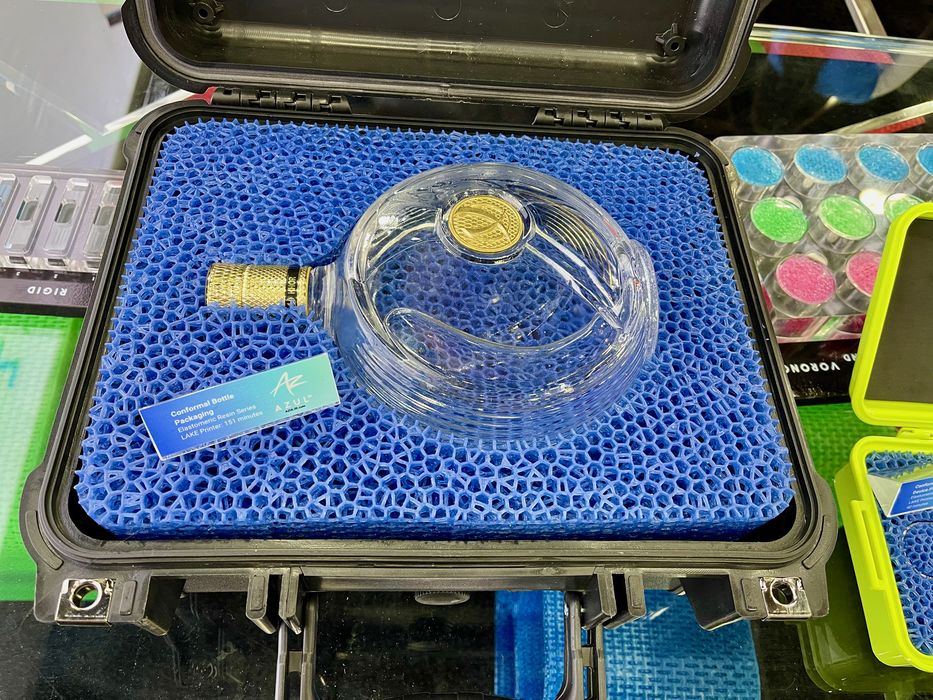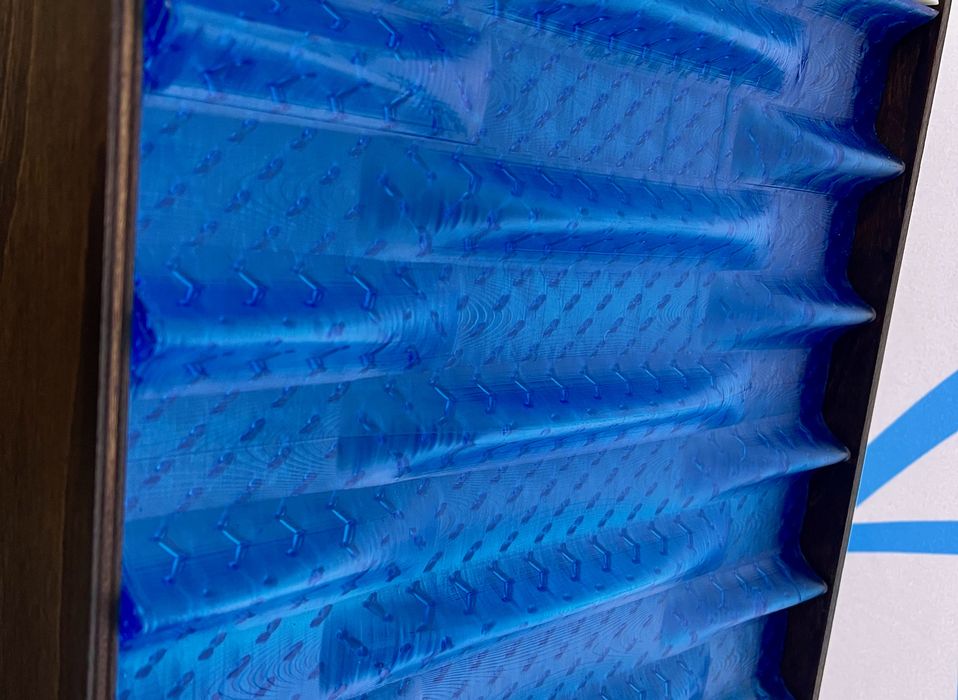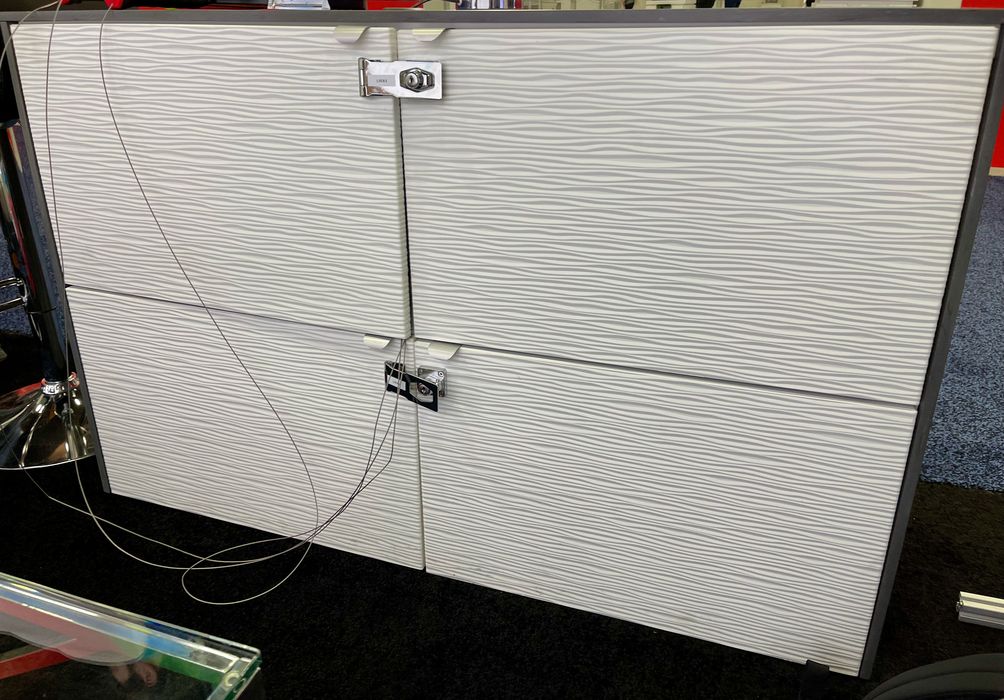
Azul 3D offers a rare combination: continuous 3D printing not only within a job, but between jobs.
The company offers a unique 3D printing system using a wide variety of resins, but it’s designed for production use.
One of the major issues with resin 3D printers in production is heat. Energy is used to polymerize the resin, either using light projection or lasers, but both produce heat that accumulates during operation. If typical resin 3D printers are operated continuously job after job, they eventually overheat and must cool down before further operation can be attempted.
This is not optimal for production use, where the idea is to keep the machines running 24/7 and squeeze as much value from them as possible.
Azul 3D’s solution is quite interesting. The company developed the “High Area Rapid Printing” process, or “HARP”. HARP is mostly a standard resin 3D printing process, but the twist is that a thin layer of transparent oil flows between the resin and the tank bottom, isolating the resin.
There are two major advantages to this approach.
First, because the resin is isolated, it doesn’t stick to the tank bottom, as occurs in most other resin 3D printers. In those systems, printing ceases on each layer to carefully “peel” the print off the bottom and reposition for the subsequent layer. That’s extraordinarily expensive in terms of job time, taking up a major portion of the duration.
Meanwhile, the HARP system can start immediately on the second layer, completely eliminating this delay. The result is that Azul 3D said the HARP process is up to 100X faster than typical 3D printers. That’s obviously of great interest to those looking for a production system.
But there is a second significant benefit with HARP. As the oil flows through the resin tank, it is cooled before it circulates again. This cooling process removes the accumulated heat and thus keep the entire system cool and able to run job after job.
This is quite different from some competing fast resin 3D printers, where they may have the continuous layer printing, but not the continuous job printing capability.
When you combine both the job speed advantage and the job after job ability, Azul 3D said they expect to have as much as 2000X the throughput of a conventional resin 3D printer.
Faster prints + no cool down time = more throughput.One more thing: Azul 3D’s first commercial implementation of HARP is in their Lake 3D printer, which has a truly massive build volume (for a continuous resin 3D printer) of 254 x 305 x 610 mm.
When you combine the throughput with the build volume, it means you can produce large volumes of large objects using the device.
What can you make with this kind of system? Azul 3D has a number of ideas, which we are showing in this post.

One is packaging. For pricey components that require extra-special custom packaging to absorb shocks, it is easy to mass produce perfectly matching inserts for this purpose with HARP technology. At top you can see a medical device that’s wrapped with a 3D printed insert. Below is the same, except for a pricey bottle of tequila.

Another application is for customized building fixtures, specifically decorative tiles. While these could be mass produced using conventional methods, the ability to 3D print them means you could print unique tiles that when mounted together form a pattern or picture. That’s something you cannot do with conventional manufacturing.

These applications typically require very specific materials, and that’s where Azul 3D’s material research has been working. They have been developing a range of materials with different properties to match these and other use cases.
The vast throughput capability means Azul 3D is taking a slightly different approach to sales. It seems that they are focusing on print clusters, where there would be large farms to mass produce products, rather than selling individual machines. “Print depots” is the idea here.
HARP is a fascinating technology that should attract new players into the world of 3D printing.
Via Azul 3D
